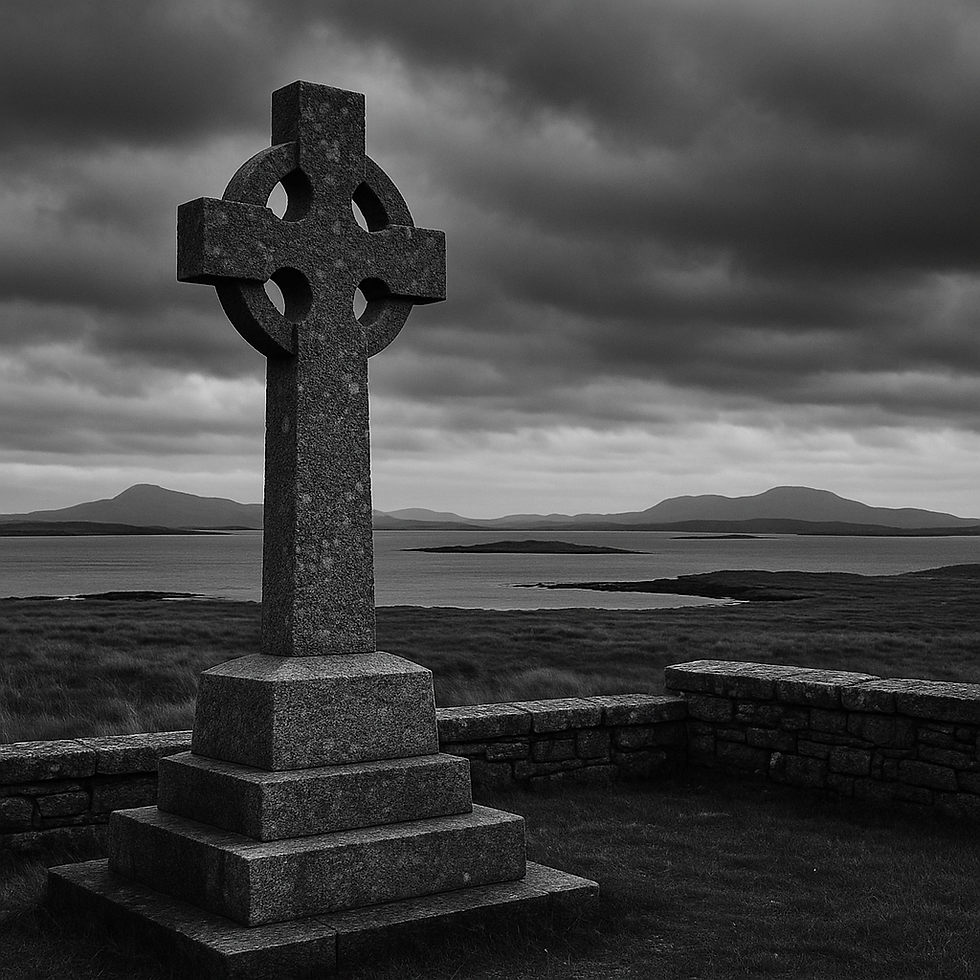North Uist Gaelic and the Wars
- Aug 11
- 3 min read

When we speak of war, we often think of battlefields far away. But in North Uist, the First and Second World Wars reached deep into our kitchens, churches, and schoolrooms—not with bombs, but with absences, new habits, and a slow reshaping of how Gaelic lived in the community.
Before the wars: Gaelic in every breath
In the early 1900s, Gàidhlig was the unchallenged language of North Uist. It carried the work of the croft, the rhythm of the kirk, and the humour of the ceilidh house. Most children started school without English, and older generations could go for weeks without speaking it at all. The language was woven into everything—sea-weather terms for fishing, seasonal vocabulary for crofting, Biblical phrases from Sunday readings, and a web of idioms unique to the island.
The First World War: a silence in the circle
North Uist sent a disproportionately high number of men to the armed forces and the Merchant Navy. Many never returned, and those who did often carried the weight of injury and trauma. Every loss was a gap in the Gaelic-speaking chain—an uncle who would have told stories, a father who would have passed on local idioms, a neighbour who would have kept traditional songs alive at the cèilidh.
For widows and older relatives raising children alone, survival took precedence over oral tradition. Bedtime stories shortened; informal teaching in Gaelic gave way to the English of official letters, pensions, and bureaucracy. The result was subtle but significant: the next generation heard Gaelic less often, and often in more limited registers.
The inter-war years: mixed signals
Between the wars, the churches of North Uist remained strongholds of Gaelic literacy—psalm-singing, Scripture reading, and catechism work preserved rich vocabulary and correct pronunciation. But schooling policy continued to penalise Gaelic use, encouraging children to speak English in any “serious” or “educational” context. This created the first cracks in the community-wide Gaelic environment: a child might speak Gaelic at home but switch to English in public to signal competence or ambition.
The Second World War: English on the wind
WWII brought massive change to Benbecula and North Uist with the construction of airfields, radar stations, and military installations. The arrival of servicemen from across Britain flooded local life with English.
Young islanders employed in kitchens, maintenance, and supply chains often found English the working language, even when all the locals were Gaelic speakers. Bilingualism became a necessity for the first time—not just an occasional skill.
In mixed marriages between service personnel and locals, Gaelic was sometimes maintained, but often English became the family default, especially if the non-Gaelic-speaking partner stayed on the island.
After 1945: the slow drift
Post-war, North Uist’s media diet became English-heavy through radio and television. Many returning servicemen kept English as the language of work and transactions, even on home ground. With younger families moving to the mainland for work, Gaelic peer groups for children thinned.
By the 1960s, it was common for children to understand Gaelic perfectly but answer in English. This shift, born of two wars’ worth of contact, prestige, and practical habit, marked the beginning of an intergenerational inversion: elders spoke Gaelic to the young; the young replied in English.
What the wars taught us about language survival
Disruption breaks transmission. The wars removed Gaelic voices from daily life—through loss, absence, or sheer fatigue—and once gaps opened, they were hard to close.
Work language matters. When the economy operates in English, the community’s “serious” conversations shift that way too.
Institutions can hold the line. Churches kept a deep register of Gaelic alive. Where this connection weakened, vocabulary and pronunciation eroded fastest.
Rekindling the North Uist Gaelic fire
The story of Gaelic in North Uist after the wars is not one of total loss—it’s one of resilience under pressure. Much of the vocabulary, song tradition, and local idiom survived because communities valued them, even as practical life tilted toward English.
Rebuilding Gaelic now means re-rooting it in the places the wars shifted it out of: in the workplace, in mixed-age social spaces, and in public-facing life. The same intergenerational link the wars strained can be restored—ma bhios i beò anns gach àite far a bheil sinn beò—if Gaelic lives everywhere we live.











